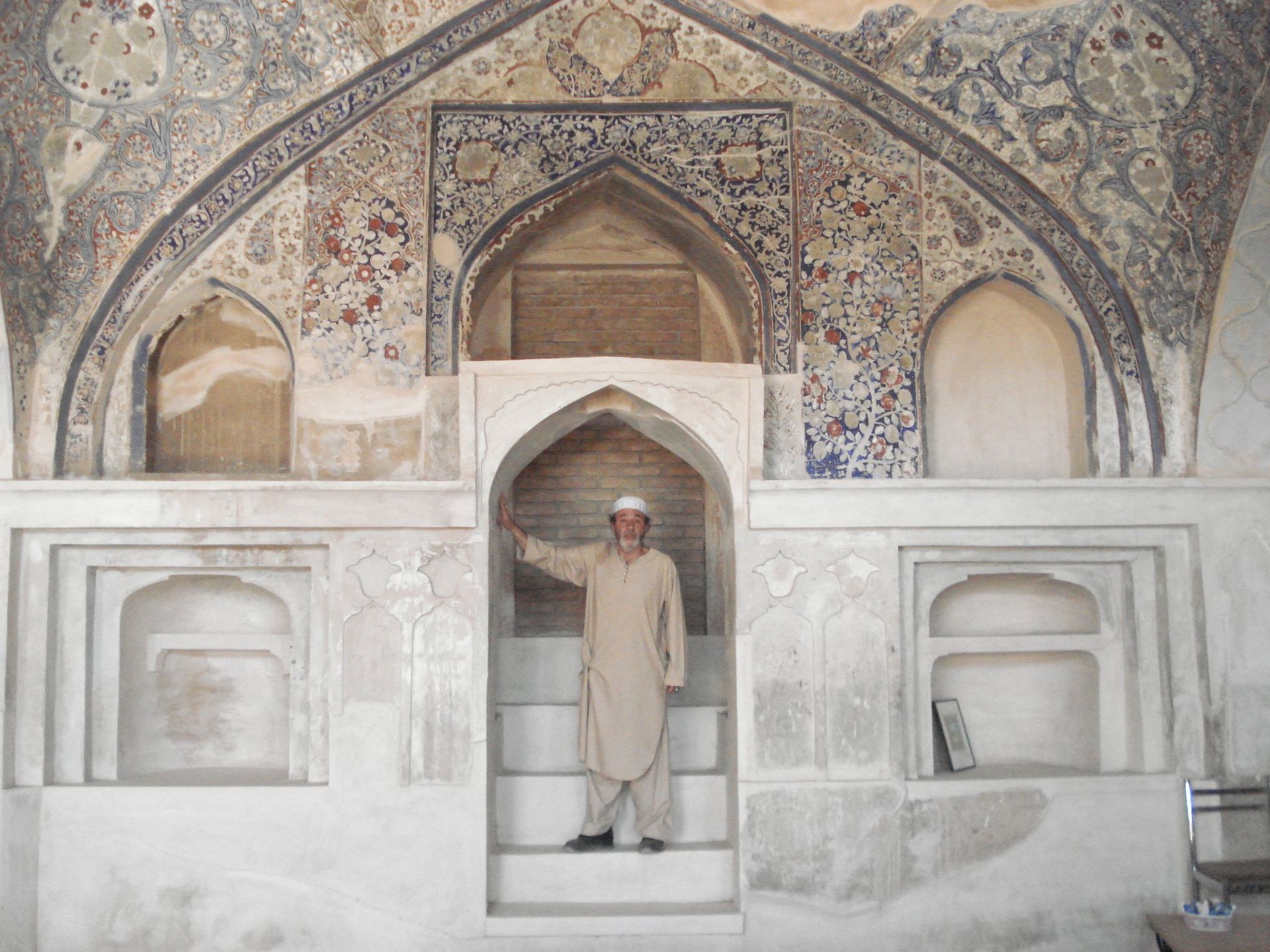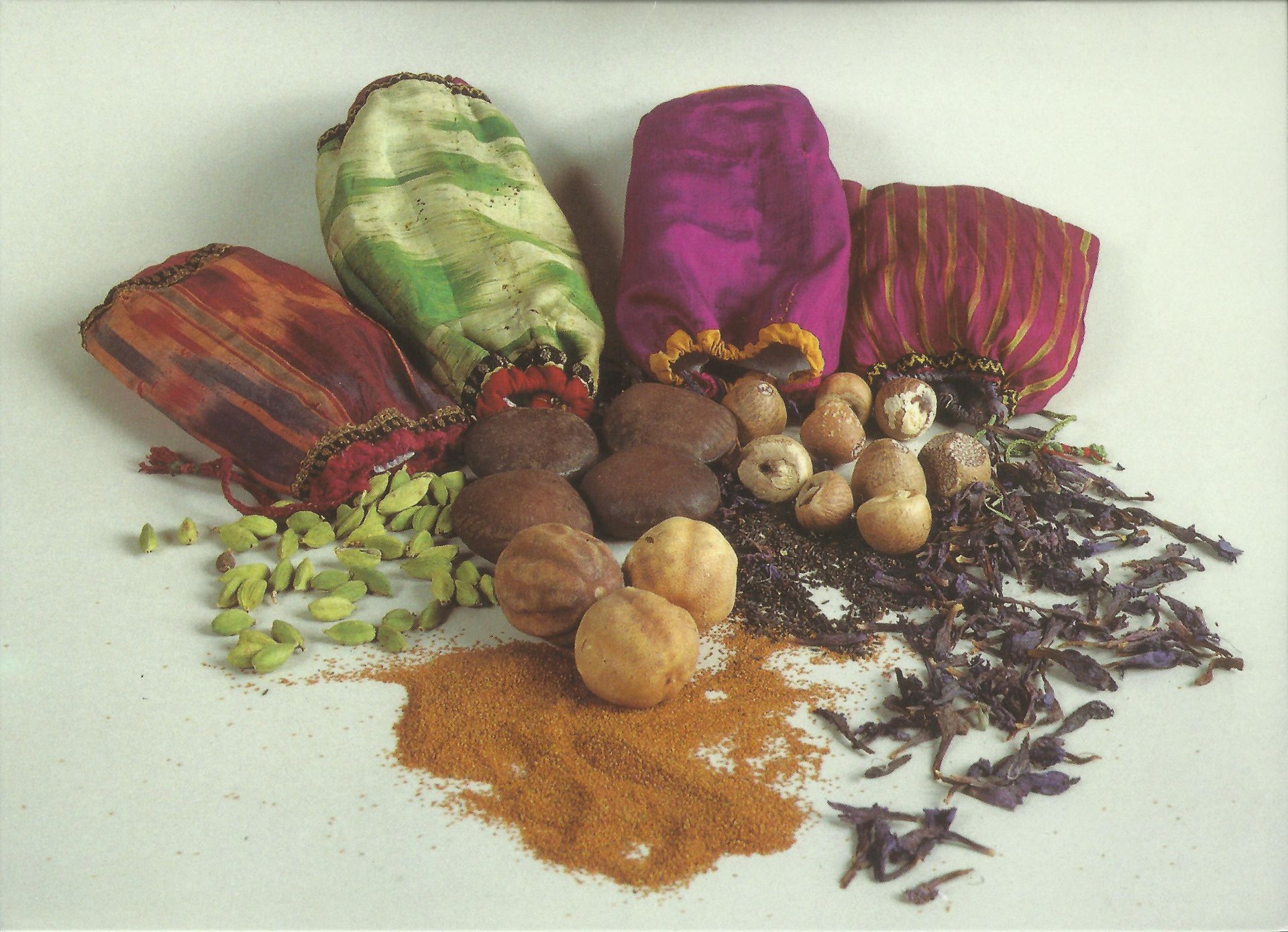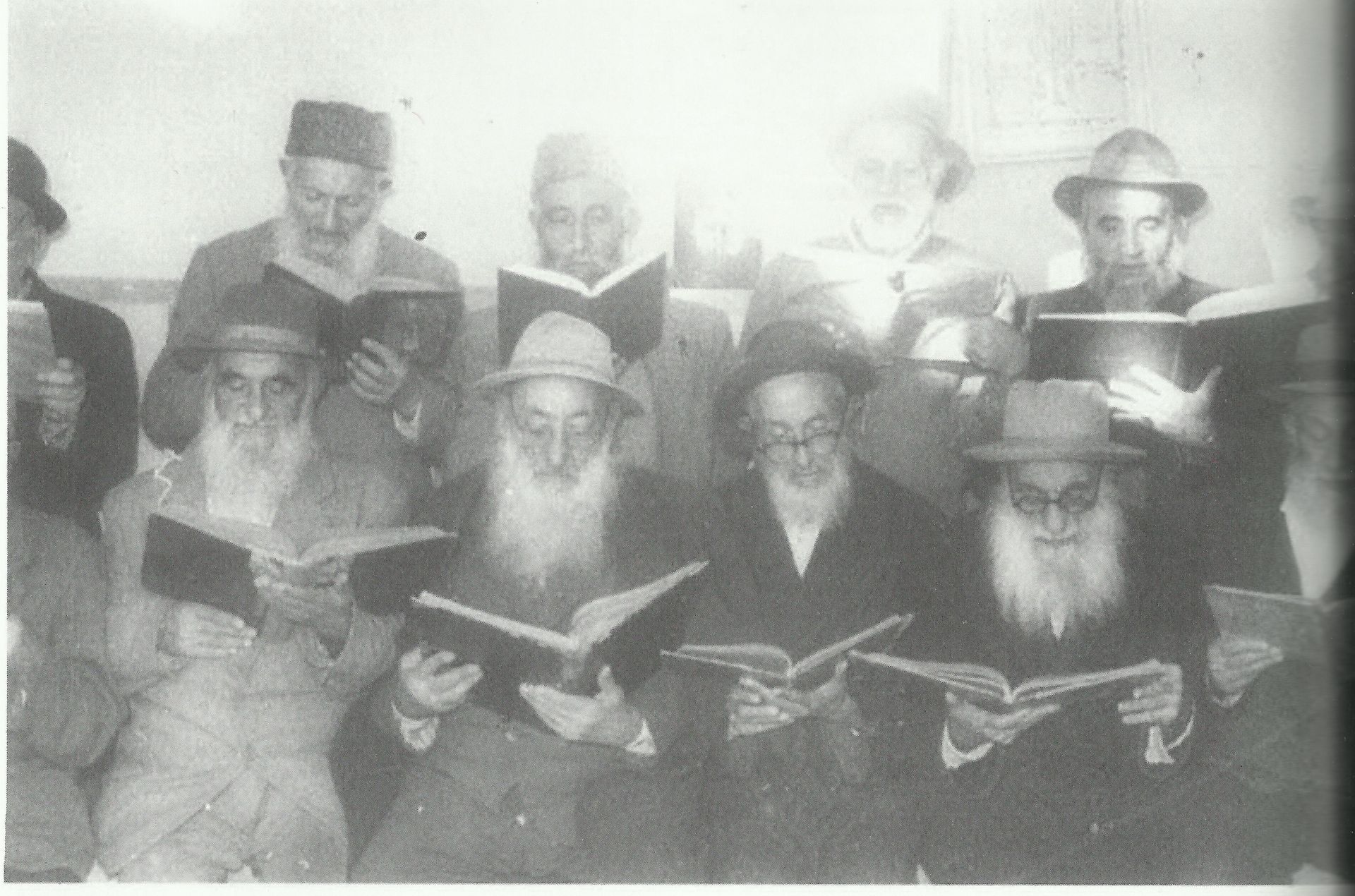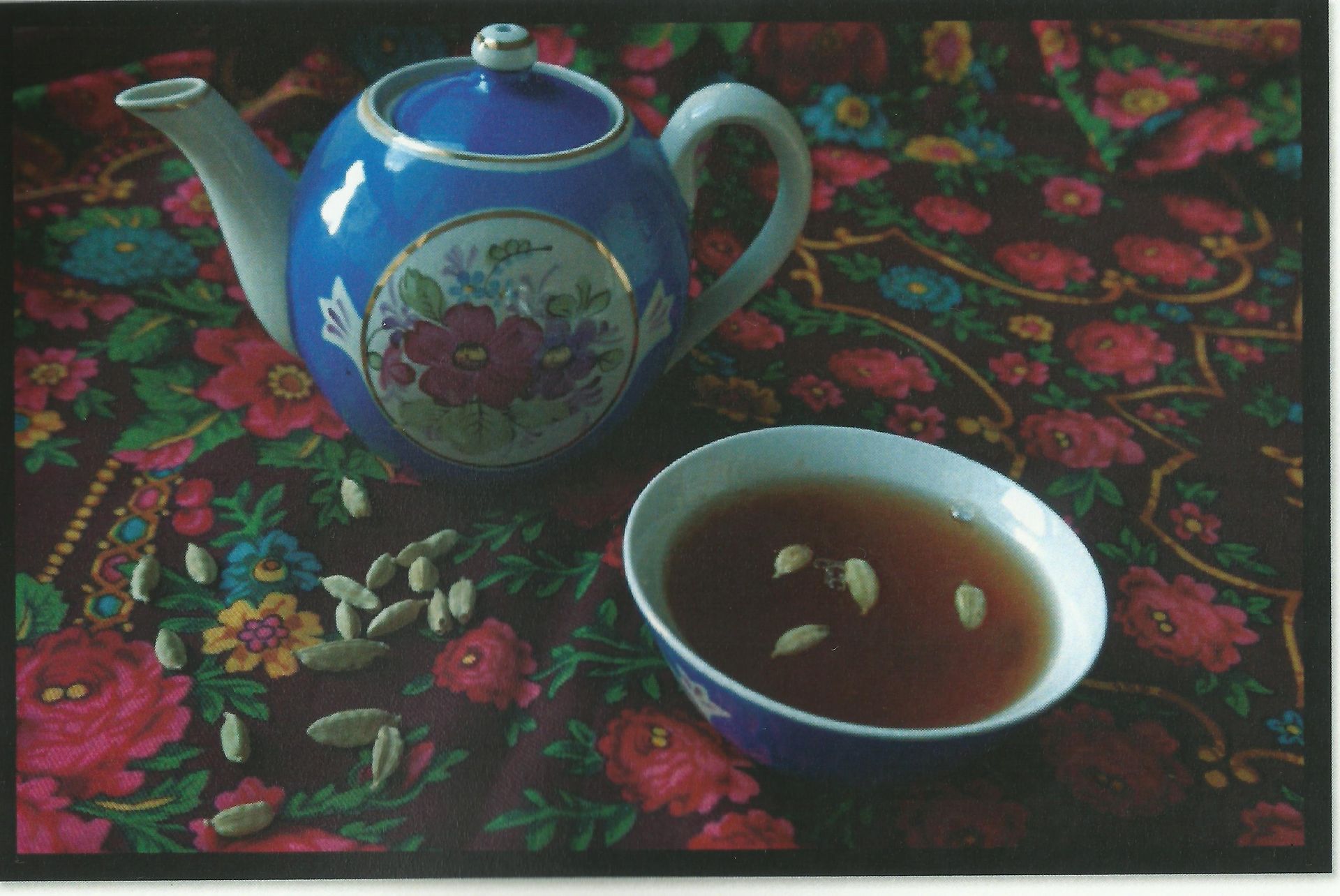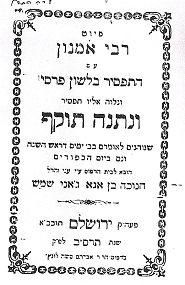
ונתנה תוקף
מאת: בן-ציון יהושע -רז
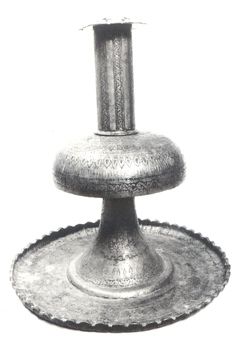
נר נשמה, פמוט ליום כיפור. באדיבות המרכז לאמנות יהודית, האוניברסיטה העברית בירושלים
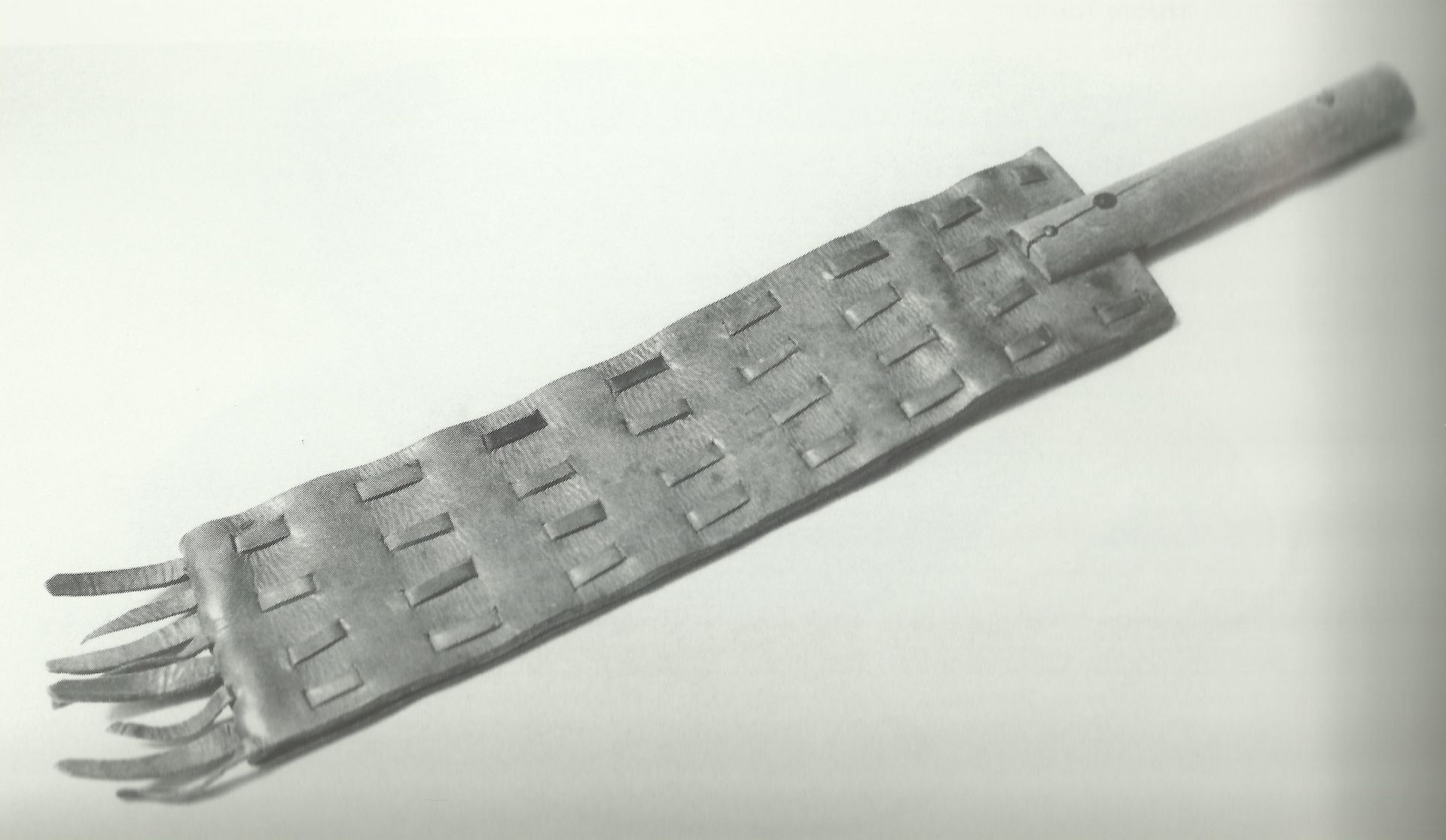
שוט – באדיבות המרכז לאמנות יהודית, האוניברסיטה העברית בירושלים
ונתנה תוקף
מאת בן-ציון יהושע-רז
והנה סיפור מופלא אמיתי על מציאת 'ונתנה תוקף' של סבי:
בשנת 1992 יצאתי (עם עוד חברים) בשליחות 'נתיב-לשכת הקשר' לדושנבה בטג'יקיסטן להנחית מטוסים חכורים ולהעלות את יהודי טג'יקיסטן שהיו תחת אש איומה במלחמת אזרחים עקובה מדם. ניהלתי שם משא ומתן עם ראשי הפלנגות, הכרזנו על הפסקת אש בשעות מסוימות והעלינו יהודים מדי לילה.
היה קושי לשכנע את היהודים לעזוב את ביתם וכל רכושם ולעלות לארץ למרות ההרג. בעיצומו של חג הסוכות, הבאתי להם ממוסקבה את ארבעת המינים, עברתי לפני התיבה כחזן בנוסח ירושלים ולבסוף דרשתי בטג'יקית על הברירה בין עלייה למוות. סיפרתי להם שיהודי גרמניה שיצאו במועד הצילו את חייהם וחלק מרכושם. המעמד היה מרגש מאוד. רעדתי וצעדתי לכותל המערב הפונה לירושלים, ישבתי בפיק ברכים וידיים ופתחתי את 'המקראות הגדולות' שהיו על השולחן ולתדהמתי מבין עמודי הספר נפלה החוברת של סבי מולא מתתיה חנוכה 'ונתנה תוקף'. סבי שהגיע 90 שנה לפניי רוחו עדיין שכנה בבית הכנסת הזה (שנהרס בינתיים על ידי השלטונות הטג'יקים). הייתה זאת דרישת שלום מופלאה מסבי, שמת בירושלים בגיל 50 מרעב במלחמת העולם הראשונה.
גמר חתימה טובה
בן-ציון יהושע-רז
עשרת ימי תשובה ויום הכיפורים בהלכה ובאגדה
מאת הרב רפאל בצלאל
עשרה ימים שמראש השנה ועד יום הכיפורים נקראים "עשרת ימי תשובה",
דהיינו ימים אלה מסוגלים יותר מכל ימות השנה שתשובתו של אדם תתקבל ותקובל ברצון.
דרשו רבותינו על הפסוק: דִרשו ה' בהימצאו, קְראוהו בהיותו קרוב, שהוא מרמז על ימים אלה שהבורא קרוב אלינו ביותר ולכן חובה קדושה שכל אדם יפשפש במעשיו ויקבל על עצמו הנהגות טובות, וירגיל עצמו להיבדל גם ממידות מגונות כגון כעס, גאווה, רכילות וכו'.
התשובה
מדרכי התשובה שהאדם יתוודה על העבירות שעשה ויקבל על עצמו לא לחזור לסורו הרע, תשובה ויום הכיפורים מכפרים.
ישנם שני סוגים של עבירות, עבירות של בין אדם למקום ועבירות של בין אדם לחברו.
יום הכיפורים מכפר על עבירות שבין אדם לבורא אם שב בתשובה כגון: אכילת מאכלים אסורים, חילול שבת ומועדים, אי קיום מצוות כגון הנחת תפילין וכו'. עבירות שבין אדם לחברו אין יום הכיפורים מכפר עד שירצה ויפייס את חברו כגון: הלבנת פנים, רכילות, לשון הרע, גזילת ממון או רכוש וכו'. אמרו חכמים: " תשובה, תפילה וצדקה מעבירין את רוע הגזירה".
צדיק ורשע
אל יאמר אדם שהקב"ה גזר על האדם להיות צדיק או רשע, אלא הרשות נתונה לכל אדם להטות את עצמו לדרך טובה ולהיות צדיק או לדרך רעה ולהיות רשע. הבחירה בידו, וכל אדם יכול להיות צדיק כמשה רבינו, חכם ונביא, או להיות כירבעם בן נבט, וכן יכול לעבוד על מידותיו להיות רחמן או אכזרי, כעסן או רגוע, נדיב לב או קמצן. אין הבורא כופה על האדם ולא גוזר עליו לעשות טוב או רע אלא ליבו נתון בידו.
בעל תשובה
כותב הרמב"ם: אל ידמה בעל תשובה שהוא מרוחק ובזוי מפני העבירות שעשה. אין הדבר כן, אלא אהוב ונחמד הוא לפני הבורא וכאילו לא חטא מעולם, ולא עוד אלא ששכרו רב מאד שהרי טעם טעם חטא ופרש ממנו וכבש את יצרו. אמרו חכמים "מקום שבעלי תשובה עומדים אין צדיקים גמורים יכולים לעמוד".
ערב יום הכיפורים
מנהג ישראל לעשות כפרות, דהיינו לוקחים תרנגול זכר לזכרים ותרנגולת לנקבה, ולמעוברת תרנגול ותרנגולת, ומסובבים סביב לראש של כל אחד מבני הבית ואומרים: "זה חליפתך, זה תמורתך, זה כפרתך... זה התרנגול לשחיטה ילך ותיכנס אתה לחיים טובים ולשלום".
מוסרים את התרנגולים לשחיטה, אחרי השחיטה נוהגים לכסות הדם בעפר ומברכים על כיסוי הדם בעפר. מי שאין באפשרותו לעשות כפרות ע"י עופות יכול לעשות כפרות גם ע"י כסף, דהיינו לוקח סכום כסף ומסובב לכל אחד ואומר: "כסף זה לצדקה ילך ותיכנס אתה לחיים טובים ולשלום".
וכן נוהגים לעשות התרת נדרים
מצווה לאכול ולהרבות בסעודות, גם חולה שיש בו סכנה ואסור לו לצום, מצווה שיאכל בערב יום הכיפורים.
מדליקים נרות כמו בערב שבת ומברכים "...להדליק נר של יום הכיפורים".
צריך לקבל את יום הכיפורים כחצי שעה לפני השקיעה.
הולכים לבית הכנסת, נוהגים ללבוש בגדי לבן ולהתעטף בטלית בליל כיפור
יום הכיפורים
אין לנעול נעלי עור
אסור לאכול ולשתות, אף לרחוץ הפה אסור
איסור רחיצה, אף ידיו ופניו בלבד אסור, נטילת ידיים מותרת עד לקשרי אצבעותיו
יום הכיפורים דינו כמו שבת, אסור לעשות בו מלאכה, כל המלאכות האסורות בשבת אסורות ביום כיפור
הפטורים מתענית: חולה שיש בו סכנה וקטנים עד גיל 10 פטורים. מגיל 11 מחנכים אותם לצום עד חצי יום. נער בן 13 ונערה בת 12 חייבים לצום יום שלם.
מעוברות ומיניקות חייבות לצום, ואם יש חשש להסתבכות מסוימת צריכות חוות דעת של רופא או רב. חולה שיש בו סכנה אסור להחמיר על מצבו ולצום, ואף עלול להיענש אם יצום.
תפילת יום הכיפורים
התפילה כוללת 5 תפילות: ערבית, שחרית, מוסף, מנחה ונעילה.
במוצאי יום הכיפורים לא יאכל עד שיעשה הבדלה כמו במוצאי שבת.
יום כיפור
מתוך ספרו של אהרן בצלאל "להניח ברכה"
בהוצאת יד בן צבי, תשס"ט, עמוד 52
בלילה האחרון של הסליחות, לפני יום כיפור, היו מקיימים את טקס התרת הנדרים. בתחילה היו בוחרים שבעה זקנים נשואי פנים שישבו כבית דין של מטה. מולם עמדו שבעה זקנים אחרים, גם הם נשואי פנים וביניהם הרב, ואלה היו מודיעים לראשונים שהם משמשים בית דין של מטה והיו מבקשים מהם להתיר את נדריהם ושבועותיהם, וכשם שהם מתירים למטה כך יתיר נדרים ושבועות גם בית דין של מעלה. הקהל היה עומד בדומיה ובתוך השקט המאיים היינו שומעים רק את קולם של הדיינים, שהיו אומרים ג' פעמים בקול אחד "מותרים לכם, מותרים לכם, שרויים לכם". אחר כך היו מחליפים מקומות, המבקשים היו מתיישבים כבית דין של מטה והיו מתירים בנוסח זה את נדריהם ושבועותיהם של קודמיהם ואז היה הקהל מתפזר לדרכו. טקס זה עורר בי תמיד אימה גדולה.
מתוך ספרו של בן-ציון יהושע-רז "מנדחי ישראל באפגאניסתאן לאנוסי משהד באיראן"
פרק מחזור השנה
הוצאת מוסד ביאליק, עמודים 377-378
יום הכיפורים
בין כסה לעשור, שהם עשרת ימי תשובה, ממעטים בעסקים, והיהודי הכין את עצמו בדחילו ורחימו לקראת יום הכיפורים.
בערב כיפור השכימו לאמירת סליחות ולהתרת נדרים. לקהילת סוחרים העוסקת בהתחייבויות כל השנה הייתה חשיבות רבה ל"התרת נדרים". עם תום הסליחות יצאו לבתיהם כדי לערוך סדר כפרות. לכל זכר לקחו תרנגול כפרות ולכל נקבה לקחו תרנגולת. אבי המשפחה סובב קודם את העוף האישי שלו מעל ראשו ואחר כך סובב מעל ראשיהם של שאר בני המשפחה את עופותיהם והכריז: "זה חליפתך, זה תמורתך, זה כפרתך זה התרנגול ילך לשחיטה ואתה תלך לחיים טובים ושלום". בשר העוף חולק לעניים או שנתנו את תמורתו בכסף. מעיהם ורגליהם של העופות נזרקו על גגות הבתים כדי לרצות את עופות השמים.
ההכנות ערב כיפור היו קדחתניות. הרבו לאכול בסעודת מצווה והכינו נרות נשמה עבים וגדולים עשויים משעווה, שאותם התיכו בסירי נחושת גדולים. הנרות דלקו בבית הכנסת מערב יום כיפור ועד מוצאי יום כיפור. שאריות "נרות נשמה" שימשו במשך כל השנה ל"הבדלה" במוצאי שבת וחג ושרידים של הנרות שימשו קמעות ונהגו להחזיקם בכיס הבגד כסגולה להגנה ולהצלחה. גם נשים שהתקשו בלדתן החזיקו פיסות שעווה מנרות יום כיפור, כסגולה להקלת צירי הלידה.
לאחר תפילת מנחה ערך הרב "סדר מלקיות" לבני הקהילה כדי לכפר על חטאיהם. ידי המולקה היו נקשרות על קורת עץ מיוחדת, כשפלג גופו העליון חשוף וראשו בין זרועותיו. הרב הלקה את האיש שלושים ותשע מלקיות, שהם כמניין שלוש פעמים שלוש עשרה מידות שבפסוק: "והוא רחום יכפר עוון ולא ישחית והרבה להשיב אפו ולא יעיר כל חמתו".
השוט העשוי ידית עץ שאליה חוברו בשתי וערב רצועות עור של שור וחמור, יחדיו כדי לקיים "ידע שור קונהו וחמור אבוס בעליו" (ישעיהו א,ג). בתום סדר המלקיות אומר עוזרו של הרב: "אם לא תשמור לעשות …. וסר עוונך וחטאתך תכופר"; המולקה תורם לצדקה והולך לטבול במקווה שבחצר בית הכנסת.
שוט ליום כיפור
מתוך הספר "אפגאניסתאן" בהוצאת המרכז לאמנות יהודית, האניברסיטה העברית בירושלים
עולה על דעתנו שלבד מן הערך הסמלי של "סדר מלקיות" היה בכך גם כדי להבהיר לאיש הקהילה את מעמדו לעומת מעמדו של הרב, שברצונו יכול גם להלקותו. הנשים היו מענות את עצמן במריטת שערות אחדות מגבות עיניהן במלקחיים או בחוט. הסעודה המפסקת נערכה בטקסיות כביום חג. הילדים היו מנשקים את ידי האב ומבקשים סליחתו והאב מברך אותם. מגיל תשע מתחילים הילדים לצום.
לתפילת "כל נדרי" מובאים לבית הכנסת גם חולים על ערש דווי, כסגולה להבראתם. בית הכנסת מוצף באורות נרות ופנסים שהביאו המתפללים. בסיום "כל נדרי" עורכים אשכבה לנשמות הנפטרים ואומרים "מי שברך" לציבור המתפללים, שכל משאלותיו יתמלאו לטובה. רבים מן המתפללים נשארים עד אשמורת בוקר בבית הכנסת ועוסקים בלימוד מסכת יומא, זוהר ותהלים.
התפילה ביום הכיפורים נמשכת עד צאת הכוכבים. חלק מן התפילה נאמר ב"תפסיר" פרסי. חשיבות מיוחדת ייחסה הקהילה ל"סדר העבודה" של הכהן הגדול בבית המקדש. הזדהותם המלאה עמה ביטאה יותר מכל את תשוקתם לחדש ימים כקדם ולחיות על אדמת ישראל. בתום ברכת הלבנה באים הבנים לבית הוריהם כדי לקבל את ברכתם, ועוד באותו ערב ביקשו להמשיך מקודש לקודש ובנו את סוכתם, כדי לקיים "ילכו מחיל אל חיל".
להתפלל עם העבריינין
מאת הרב יאיר גול
הכרזה זו, ההיתר "להתפלל עם העבריינים" הונהגה בקהילות אשכנז במאה השלוש-עשרה כדי להתיר את התפילה ביום הקדוש עם יהודים עוברי עברות ותקנות הציבור שהוטל עליהם חרם, ועל ידי כך הותר להם לבוא בקהל.
יש סבורים שהכוונה בהיתר זה היא לאנוסים, שהיו באים בסתר בליל יום הכיפורים להתפלל בציבור; היה צריך להתיר במיוחד את התפילה עם אלו שהמירו את דתם בגלוי ונשארו נאמנים לדת ישראל בסתר ליבם.
לפי דעה נוספת נאמרה תפילה זו ב"מניינים" שארגנו האנוסים בליל יום הכיפורים, ובה גם ביקשו רחמים על עצמם ושה' יקבל תפילתם גם אם כל השנה נראים כ"עבריינים". נוסח זה נשאר עד היום והתקבל על כל תפוצות ישראל.
משערים שתפילת כל נדרי, שהיא נוסח תפילה שנהגו כל בית ישראל לאומרו עם כניסת יום הכיפורים, נתחברה בתחילת ימי הגאונים.
"כל נדרי" בביצוע יעקב בצלאל
"אשרי עין" פיוט ליום הכיפורים בביצוע יעקב בצלאל
"ברכי נפשי" פיוט ליום הכיפורים בביצוע יעקב בצלאל
מתוך ספרו של אריה אליסף "זכרתי ימים מקדם"
כרך ב', מתוך עמודים 26-34
בעשרת ימי התשובה ישנן תוספות קצרות שונות בתפילת העמידה. "מי כמוך...", "המלך הקדוש", "זכרנו לחיים..." וכו'. אם המתפלל שכח לומר על חלק מהם, הוא חייב לחזור אחורה ולפעמים לתחילת העמידה. כדי למנוע זאת, נהגו חלק מהמתפללים לומר בקול את תחילת התוספות כדי להזכיר לקהל שישים לב. בתפילות שבת שובה (כמו בכל שבתות השנה) היינו כל הילדים ביחד בבית הכנסת. כאשר הגענו ל"עמידה", עשינו תחרות מי יזכיר קודם לקהל את התוספות הנ"ל. כעבור מספר שניות מתחילת העמידה והקהל בקושי הספיק להתפלל שורה אחת, מיד נשמעו צעקות ילדים מכל פינות בית הכנסת: "זכרנו לחיים", "המלך הקדוש" וכו'. היות ואסור לדבר בזמן העמידה, המבוגרים סובבו ראשיהם לעבר הילדים ונזפו בהם "אה" "אי" "הו" "הום"...אף על פי שדבר זה עלה למספר ילדים באזניים אדומות או בצביטה, המשכנו כך בכל תפילות השבת. איני יודע, אם כעסו עלינו בגלל שמיהרנו להתפלל, או בגלל שלקחנו להם את "התענוג" להזכיר לקהל, או בגלל שתי הסיבות גם יחד.....

....... בערב כיפור בצהריים, רוב המבוגרים וחלק מהנערים, לאחר שהתרחצו מבעוד יום, הלכו לחצר בית הכנסת כדי לקבל "מלקות". העוזר, אחד מזקני העדה, העמיד באלכסון קורת עץ על הקיר ונעמד לידו. אנשים עמדו בתור כדי לקבל מלקות. בהגיע תורו, המולקה חשף את חצי הגוף העליון, כופף קצת על העמוד, אחז בעמוד בשתי ידיו מעל הראש והעוזר קשר את ידיו לעמוד בעדינות. הרב הרים את השוט (באורך של כ-40 ס"מ וברוחב כ-12 ס"מ) העשוי רצועות עור של שור וחמור, ברוחב של כשני ס"מ, וארוגים בשתי וערב, לפי הפסוק: "ידע שור קונהו וחמור אבוס בעליו..." והתחיל להלקות בעדינות יחסית, לפי הסדר: כתף שמאל, כתף ימין, צלעות, כתף שמאל וכו' והעוזר קורא בקול: "והוא רחום יכפר עוון..." ככה שלש פעמים. בס"ה 39 מכות.
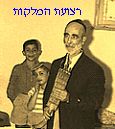

אחר זאת העוזר התיר את הידיים, המולקה התלבש, נשק את ידי הרב והעוזר, תרם מספר פרוטות בצלחת עבור עניי העדה, "גמר חתימה טובה" או: "סדה ביסט סול בכובי" והלך להתפלל מנחה, אם לא התפלל קודם לכן, עם אדמומית ועקצוצים בגב. בנעורינו, אחי ואני זכינו לקבל מלקות מספר פעמים. איך אומרים: "כפרת עוונות".......
מירי קורט שלחה אלינו מתכון להכנת שָרבָּט, למוצאי יום כיפור:
אמא שלי הייתה מכינה למוצאי כיפור משקה קר מזרעים של פרח ריחן,
סוכר הל טחון, זעפרן וקראו לזה שרבט
גמר חתימה טובה
מירי קורט-סודק
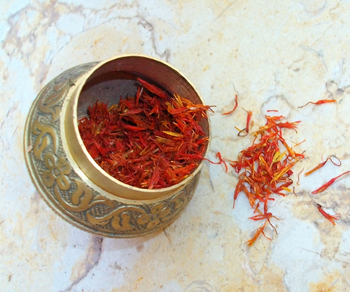
זעפראן שצילמה קטורה צור
נעמי כהן שלחה אלינו מתכון מודרני של שרבט:
חומרים:
2 מנגו בינוניים
3 כפות מיץ לימון
150 מ"ל יין לבן
1 חלבון ביצה גדול או 2 חלבונים בינוניים
60 גרם סוכר (1/3 כוס).
לקישוט:
2 פסיפלורה או 4 כפות מחית פסיפלורה קפואה, מופשר (לא הכרחי).
אופן ההכנה:
מקלפים את המנגו בעזרת סכין חדה ומורידים את בשר הפרי מהגרעין. במעבד מזון טוחנים את המנגו עם מיץ הלימון והיין עד שמתקבלת עיסה חלקה. מעבירים לקערה גדולה (עם מכסה). בקערה נקייה מאוד מקציפים את חלבון הביצה עם סוכר עד שמתקבלת קציפה קשה. מקפלים את הקצף בעדינות לתוך תערובת המנגו. מכסים ומקפיאים ל-4 שעות. מקציפים שנית במעבד מזון. אם רך מידי, מחזירים ל-10 דקות למקפיא או למקרר. חוצים את הפסיפלורה לחצי ומוציאים את תוכנה בעזרת כפית. מסדרים את קציפת המנגו ב-4 צלוחיות ומקשטים בפסיפלורה. מצננים במקרר 5 שעות לפני מועד ההגשה.
ומוסיפים אריה אליאסף וזילפה כהן:
כותב אלינו אריה אליאסף:
השרבט בחתונות היה עשוי מזרעים של "חאקשיר", (גרגרים קטנטנים, חומים כתומים, של צמח בר שאני מכיר אותו (ממשפחת החרדל) אבל לא את שמו העברי), סוכר ופרוסות לימון בתוך סיר ענק מאלומיניום עם חתיכות קרח. זמן מה לאחר שהוכנה התערובת כל גרגיר וגרגיר היה מקבל ציפוי של ג'לי ו"שוחה" בתוך הסיר הענקי.
שכחתי להוסיף שהעמידו בצד, ע"ג מתקן מאולתר,ספל אלומיניום עם ידית ומספר כוסות זכוכית. איני זוכר אם הניחו גם קערית מים לשטיפת הכוסות. בכל אופן, כל מי שרצה לשתות, ערבב עם הספל את פני המים, באתו זמן גרגירי החאקשיר החומים-כתומים "התרוצצו" במים כמו דגיגים, מזג לעצמו כוס ולא שכח לברך.
כותבת לנו זילפה כהן:
שתהיה לכולם שנה טובה, בריאה ושמחה!
בררתי עם אחותי הגדולה, תמר, בקשר למתכון שרבט: מערבבים זרעים, שנקראים תוֹכְמֶה שרבטי ביחד עם מים וסוכר. אפשר גם לערבב חָאקְשִיר עם מים וסוכר, והנה השרבט מוכן.
שנשתה בשמחות!
אלי כאפי שלח אלינו את הכתבה הבאה המכילה קטעים מסיפור חייו של הרב דוד מורדוף הכהן זצ"ל על ראש השנה ויום כיפור, הראט, אפגניסטן, 1931-1957.
אנו לקחנו את הקטע השייך ליום כיפור. עקב השימוש בעברית ואנגלית יש שיבוש קל לעיתים בסדר המילים. עם הקוראים סליחה.
הרב דוד מורדוף הכהן הוא בנו של הרב מולא יוסף הכהן.
אנו לקחנו את הקטע השייך ליום כיפור. עקב השימוש בעברית ואנגלית יש שיבוש קל לעיתים בסדר המילים. עם הקוראים סליחה.
הרב דוד מורדוף הכהן הוא בנו של הרב מולא יוסף הכהן.
EXCERPTS FROM THE LIFE STORY OF HARAV DAVID MORADOFF HACOHEN ZT’L
ROSH HASHANA AND YOM KIPPUR IN HERAT
AFGHANISTAN 1931 - 1957
Erev יום כפור
Before ערב כפור each family bought a few chickens from the market, one chicken for
each member of the family. A hen for the female and a cock/rooster for the male and
every body tried to buy white chickens if possible. On ערב כפור immediately after
סליחות and התרת נדרים most people would rush home for סדר כפרות . The father
held a chicken and circled it around his head while reciting the text of '' חליפתי וכו
זה three times, then repeating the same act first on his wife then on the boys and
finally the girls. Then, immediately after this ceremony all the chickens were taken to
the שוחט to be slaughtered. After Shchita the chickens were cleaned and given to the
poor. The intestines of the chickens were thrown on the roof of the houses for the
birds to eat them, in the belief that as we have mercy on the birds by giving them
food, in turn G-d will have mercy upon us.
סעודת ערב יום כפור - Seudat Erev Yom Kippur
On ערב כפור we believed that it was a big Mitzvah to have more meals than on a
normal day and some people had many meals at different intervals. We also had a
Minhagh to eat fish in the morning.
סדר המלקות - Seder Hamalkut
Befor Mincha after having a bath every body went to the Synagogue to receive
מלקות in order to atone for those sins that were חייו מלקות . A calf leather whip
fringed with donkey skin was used to give a ritual 39 lashes to all males over Bar-
Mitzvah age to stir them to repentance. The man bent himself on the pole and put his
head between his arms and his hands symbolically bound, then the Rav started to
strike at his bared back while reading the whole Pasuk of והוא רחום three times one
beat on each word for the total of 39 lashes for the sins for which we deserve the
punishment of stripes.
After receiving the Malkut most people went to the Mikveh which was in the
Synagogues courtyard and had a טבילה . After the טבילה everybody rushed for
Mincha, there were many Minyanim for Mincha. As soon as one group of 15 to 20
people were ready they prayed Mincha followed by another group of 15-20, until all
had completed mincha.
ליל כפור (Lel Kippur)
Most families had a Minhagh to kindle a few lights in the Synagogue in addition to
the lights kindled at home. Some families kindled one light and some families kindled
two or three lights in the Synagogue, one light was for נר נשמה (memorial light) for
deceased relatives and one or two more lights for the long life of the family. The
lights were a lamp with a wick burning with Neft paraffin oil and there was enough
oil in the lamp to burn until .מוצאי כפור
So, before סעוּדת המפסקת people took their oil lamps to the Synagogue and kindled
them or gave them to the Shamash who lived in the courtyard of the Synagogue to
kindle them later on their behalf. It was believed that if the lamps burnt nicely and
clear without smoke until the end of כפור then the coming year would be a lucky and
good year for the family, but חס וחלילה if the lamp did not burn cleanly throughout
the day, or went out, then the family was very upset in case the coming year would
not be as good as it should be for them. However, if the family kindled two or three
lights and one of them did not burn well or went out it would not be so bad, as the
other one or two were ok and this gave them great comfort.
סעודת המפסקת (The final meal)
This was arranged like a feast day, but with respect and awe. After the meal, and
before going to shul, the children kissed their father’s hands and he blessed them.
We did not have electricity until much later, therefore, there were many large paraffin
oil lamps hanging on all sides of the Synagogue and the שמש (Shamash) would
kindle them at the right times. On כפור there were so many oil lamps burning in the
Synagogue that it became very warm and very bright from the heat of the lights.
כל נדרי (Kol Nidre)
Seven ספרי תוּרה were brought out from the היכל and before starting כל נדרי the
honour of bringing out all the sefarim were sold by auction. The first ספר כל נדרי
was the most expensive of all. Most years my father z’l used to purchase bringing out
ספר כל נדרי , but he had to pay a good price for it.
I remember that the highest price was to donate a large barrel of paraffin for lighting
the synagogue lamp. Once agreed the congregants were happy, as the supply of
paraffin which was difficult to get in those days, was now guaranteed. (My father z’l
had business connections with Russia exporting karakul sheepskins and wool and in
return importing sugar and paraffin).
After the auction the seven ספרי תוּרה were brought out from the היכל (ark) and
taken to the בימה (Bimah) which was in the middle of בית הכנסת (synagogue).First
the person carrying ספר כל נדרי went to the בימה and stayed in the middle of the
ארון followed by בעל ספר שני who stood on his right and בעל ספר שלישי stood on
the left. The rest of בעל ספרים carrying the ספרים stood around the בימה and the
congregation stood around the ספרים with awe and respect.
After reciting בישבה של מעלה (Bishivah Shel Maala) and ברכת שהחיינו (Birkat
Shechechyanu) by the person holding the ספר כל נדרי , every body attempted to hold
ספר כל נדרי and each of the other ספרים (Sefarim) whilst praying to Hashem asking
forgiveness for their sins and for a good and healthy new year and wellbeing of their
families.
Then every body went to the Rav to make השכבה (Hashkava) for their relatives who
had passed away and a (Mi Sheberach) of חיים טובי ם (Chayim Tovim) for the
family and all the relatives who were alive and made an offering (donation to בית
הכנסת ). At the end a מי שבירך was said by the Rav in honour of the 3 חתנים
(Chatanim) of שמחת תורה (Simchat Torah). The honour of being חתנים were
already auctioned before כפור (Kippur).
There were 3 חתנים (Chatanim) - חתן בראשית (Chatan Breshit), חתן וזאת הברכה
(Chatan Vezot Haberacha) and חתן מעונה (Chatan Meonah). Then all the Sefarim
were taken back to the היכל and the service continued with תפילת ערבית (Tefilat
Arvit) until the end.
Some people stayed the all night in the Synagogue reading תהלים (Tehilim) and in
the very early morning they sung the כתר מלכות (Keter Malchut) which speaks about
the greatness of Hashem with the creation of the world.
On Yom Kippur the כהנים (Cohanim) performed נשיאות כפים (Nesiout Kapayim)
דוכן - Duchanning – three times; during תפלת שחרית - מוסף - נעילה
( Tefilat Shachrit, Mussaf and Tefilat Neailah). All the מצוות ועליות (Mitzvot and
Aliyot) for יום כפור were sold by auction.
Some people started to read תקוני הזוהר (Tikune Hazohar) from - ערב ר''ח אלול
Erev Rosh Chodesh Elul, a portion of it each day and finished it on יום כפור . So,
between תפילת מוסף (Tefilat Musaf) and מנחה (Mincha) there was a small break
and those people read the last portion of the תקוני הזוהר and said Kadish.
תפילת נעילה(Tefilat Neilah)
During תפילת נעילה the כהנים performed נשיאות כפים , washing their hands
עד קשרי אצבעותיהם . There was a מנהג (custom) that after the כהנים washed their
hands families that had a barren woman brought a tea pot filled with rose water and
asked the כהנים to wash their fingers again with the rose water. This was done in a
china bowl and this rose water was then given to the barren women to drink on מוצאי
כפור (Mosaei Kippur). It was believed that this water would help them to conceive. It
was believed also that this water was good for certain heart ailments and I remember
that over the years I had to wash my fingers with rose water quite a few times for the
different families.
Candle of כפור
It was a custom that every year after ט''ו באב or the latest between & ראש השנה
כפור each Synagogue collected some money from the community and bought a large
piece of pure wax. The wax was melted in a large copper pot until it turned liquid.
The boiling liquid wax was then poured on to a very thick wick about 1m or more in
length which was made especially for this purpose. The liquid wax was poured many
times, layer upon layer until it produced a very thick, long candle.
On ערב יום כפור this special candle was lit in the Synagogue and would burn for the
whole of יום כפור . On מוצאי כפור after ערבית (evening service) the almost burnt
candle was brought on to the Bimah for הבדלה Havdala and every body said
ברכת מאורי האש over the candle. Most people tried to get a small piece of the wax
which dropped around the candle while burning on יום כפור as it had a nice smell.
People also put some of the wax in their pockets for סגולה (Segulah) since it was
believed that it was good for protection and prosperity. Pregnant women carried these
pieces of wax at the time of birth as they believed it would ease the pain.
Whilst making this special candle many more smaller candles were also made to be
used for הבדלה (Havdalah) on Mosaei Shabbat in the Synagogue and for people to
make הבדלה at home as there were no pure candles available in the shops.
After ערבית we recited ברכת לבנה (Birkat Levanah) and some people had recited it
after breaking the fast by making a Minyan in their neighbours’ house.__

